Sometimes thoughts never become fully fleshed out. Writing about Cube is interesting for a few reasons. On the positive side, those of us that create Cube content for various websites are in a small minority of Magic writers on the internet. Not because we write, but because there are very few niches in Magic that are a specific as Cube. Vintage, Commander, Pauper are others. We write about something very intricate, something very special to us. Not saying that Standard and Legacy and whatever the current limited set is aren’t interesting, but they all come and go constantly, and change very quickly as well. People that love Standard love iterations of it throughout history, not every Standard format ever. We Cube writers love Cube, we think about it on an hourly basis, talk about it at every moment. That still doesn’t make it easy. The writing. What was I talking about again?
Welcome to another, more haphazard edition of Cubers Anonymous.
If you can read and decipher that first paragraph, then please come and explain it to me. You see, this is how my brain works most of the time. I have
ideas Ideas IDEAS, but they’re always so fleeting that I’m fortunate if I’m near a computer or notepad to put them down. If any one thing from the past two
years of this column should be evident, it’s that I absolutely love this format that I’m blessed to be able to write about every other week. I have passion
for it. Despite this, the words don’t always come easy. I write on a subject that isn’t naturally fresh outside of new cards a few times a year, so for me,
new topics aren’t always plentiful in nature. At least ones that can anchor an entire article.
That’s where the grab bag comes in.
Every article idea that I can write down, I do. Sometimes these ideas are just thoughts rather than fully functioning 2000+ word concepts. Today we have
not one, not two, but four of these type of ideas. Today I’ve put together four small articles into one, with four completely separate topics. All
of these things I’ve wanted to write about for a while, but never found the depth for any of them. So today you get four mini-articles! Today’s musing are
going to be more relaxed than normal, so hopefully we can generate even more conversational discussion in the comments.
Part One: Saboteurs (With Apologies to Jonathan Richmond)
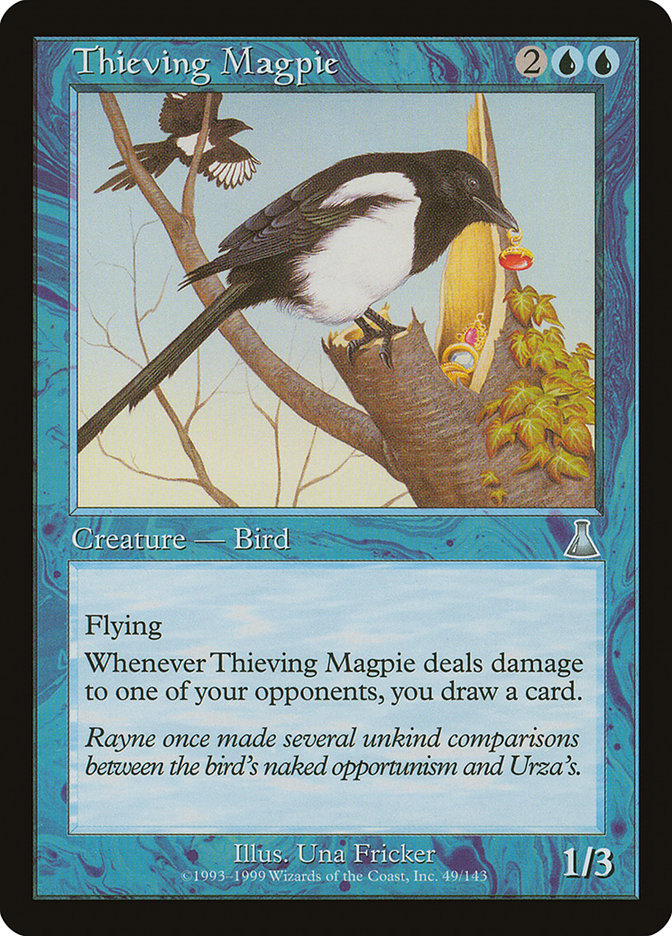
In Magic, a saboteur is a creature that creates an effect when it deals combat damage to an opponent. These creatures have seen a variety of play in Cubes since their inception, with cards like Theiving Magpie, Ink-Eyes, Servant of Oni, and Shadowmage Infiltrator blazing the trail for all future saboteur creatures. But times are getting rough for these creatures; it’s getting harder and harder for them to make it into Cubes these days. Why is that?
Building the right saboteur creature for Cube success requires three things, and I think all of these things have to line up correctly for rare Cubes to even begin to consider them for inclusion.
Speed/Cost
A saboteur has to be able to be attacking your opponent on your fourth turn of the game without acceleration or other shenanigans. Period. This is the most important factor to consider, as the advent of planeswalkers and absurdly above-the-curve creatures like Hero of Bladehold or Huntmaster of the Fells are becoming more and more common as time goes on, which means you have to be creating equally powerful effects with your card equity. Dealing one damage and drawing a single card on your fifth turn with ole Thieving Magpie is the way of the past in modern Cubes. You must find a way to connect before this stage of the game, or don’t bother showing up.
The modern card this affected the most?
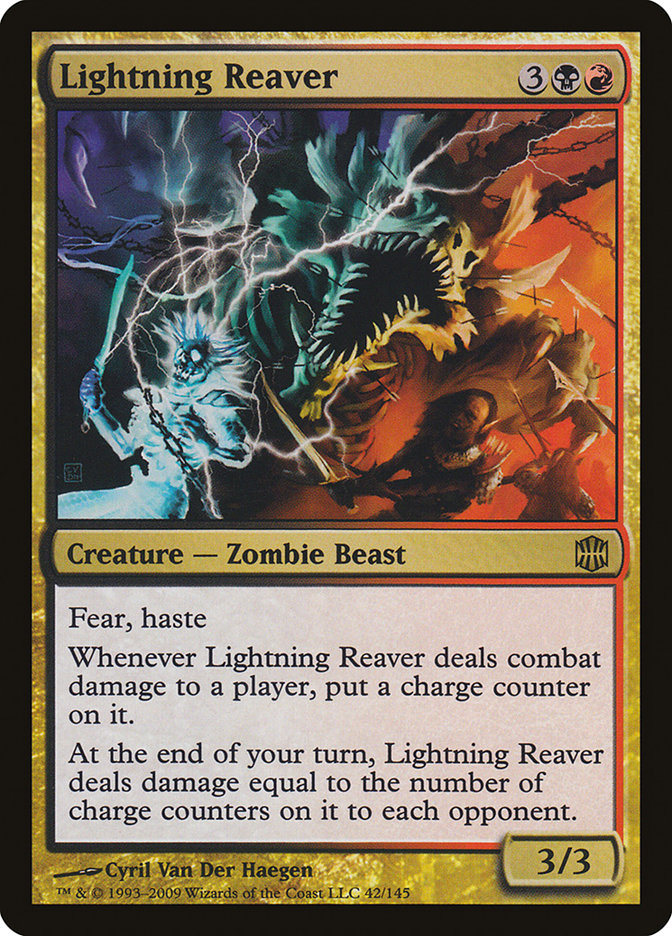
The effect and evasion is there, but it’s just too slow to make an impact on the game.
Power of Effect
These days, this is less of an issue. The effects of saboteurs are getting more and more powerful each year (just look at M14’s Liliana’s Reaver) but there are still cards that are lacking due to not being impressive enough when they start hitting. The effect has to be worth at least a full card, or create card advantage via you drawing or your opponent discarding. I don’t see this really being an issue evaluating these kind of cards going forward.
The modern card this affected the most?
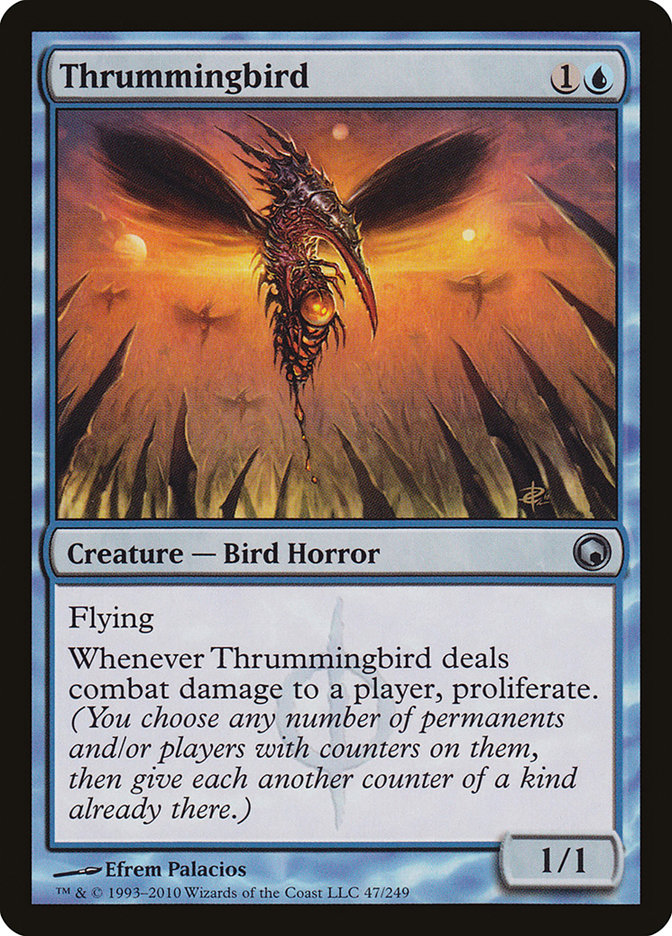
It has the right cost and evasion, but the effect is rarely worth what you put into it. It would be sweet in a Cube where Proliferating was a thing, though.
Evasion
This is a yes-or-no question. Doesn’t have evasion? Doesn’t connect much. It’s always tempting to put saboteurs in knowing they have this issue (I currently have Precinct Captain in my Cube now, but no, it shouldn’t be) but this is the beginning of the road to failure. Evasion is absolutely critical to the success of a saboteur in Cube, otherwise you have to use other cards (equipment, removal) that may or may not be in your draft/deck to have the card do what it’s supposed to. Flying or trample is the bare minimum.
The modern card this affects the most (other than the aforementioned Precinct Captain)?
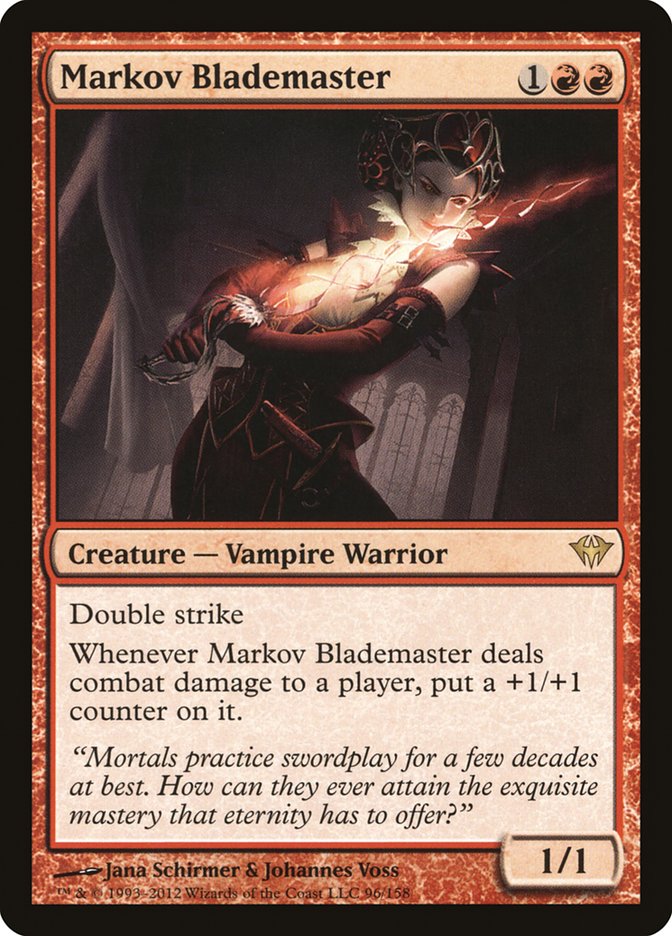
The cost and effect are great, but the fact that it trades with a Squire of all things doesn’t help its case. I know it’s in the color of burn, but like I said above, you can’t rely on having it all the time.
Of all saboteurs, my Cube only has a few; Shadowmage Infiltrator, Ninja of the Deep Hours, Trygon Predator, Hypnotic Specter, Precinct Captain, Stromkirk Noble, and Looter il-Kor. Edric, Spymaster of Trest is also in my Cube, but his situation is quite different from the first set of creatures. Each has flying evasion or better, with the exception of the Captain and Stromkirk Noble. Stromkirk Noble has quasi-evasion, and is the only card on the list to cost a single mana, which weighs heavily in his favor. I’m pretty sure I talked myself out of giving Precinct Captain another chance at a draft over the last five paragraphs. Luckily M14’s Imposing Sovereign is waiting in the wings to take its place. Ninja of the Deep Hours will likely be going the way of its sneaky friend Ink-Eyes soon, as being a random, cheap unblocked creature is getting harder to be these days.
The takeaway from this section should be that the vast majority of saboteurs don’t fit these requirements, and our expectations should be tempered when evaluating new ones. I’m still going to give Liliana’s Reaver a shot since the effect is so dramatically powerful, despite it missing on two of the three categories.
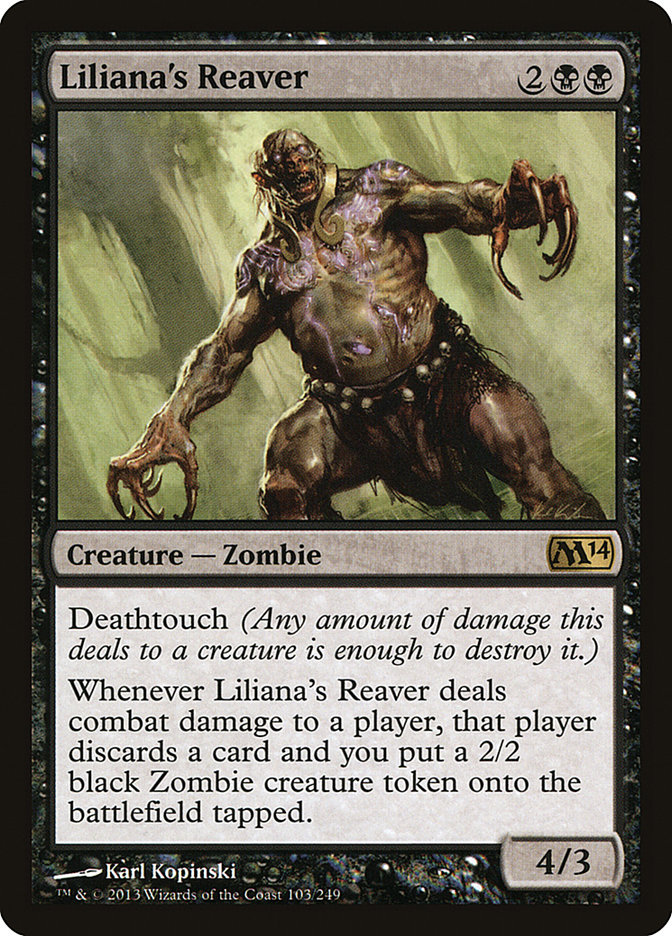
Maybe we’ll just never learn.
Part Two: Cube-Worthy versus Draft-Worthy
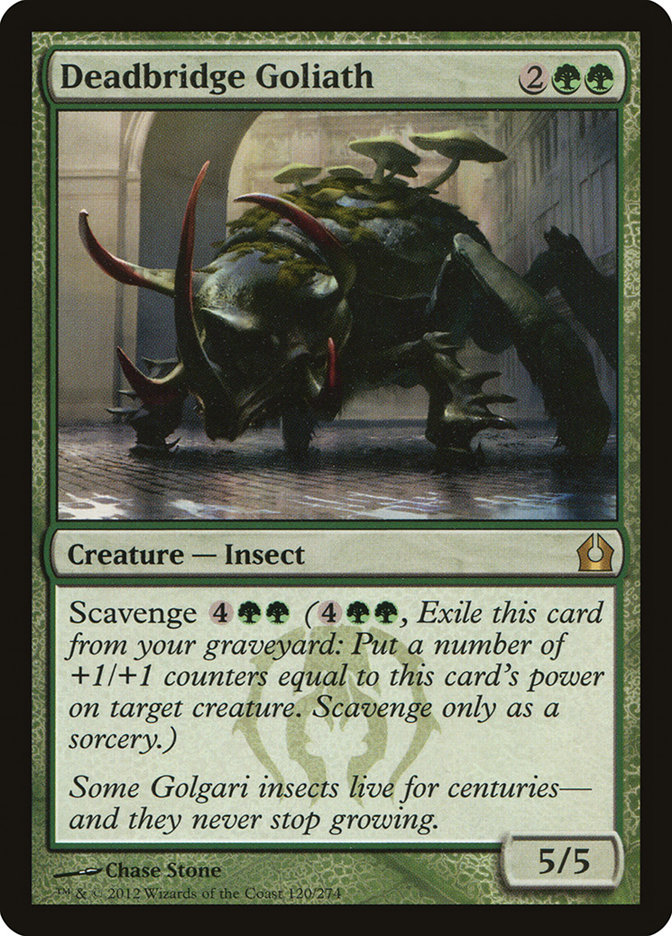
This topic briefly came up during a taping of Usman and Anthony Avitollo’s podcast, The Third Power, around this time last year. We were talking about the recently spoiled Deadbridge Goliath (wish I had called him Deadbeat Goliath, but sometimes it takes eleven months to get a joke right) and I commented that this is a card I’d like to see in a draft but would likely never get close to making it in my Cube list. Avitollo agreed, and we left it at that. And since we agreed, we left on the table a prime discussion point about what that even meant (don’t worry, Part Three below is something we disagree on. Hey! HEY! No cheating!).
Imagine you’re drafting a red/blue tempo deck. You have a ton of great stuff drafted so far; a Snapcaster Mage, a Grim Lavamancer, three red/blue dual lands, some instant speed draw and a couple of beefy yet reliable creatures like a Flametongue Kavu and a Wake Thrasher. Your curve looks good so far, and you only need a handful of playables to complete the deck. Pack three rolls around and you notice you’re light on actual burn spells. You’ve grabbed Chain Lightning, Arc Trail, and Brimstone Volley, but really just need one more piece. The final pack you haven’t seen is laid down in front of you. You nervously pick it up and slowly thumb through it. Seven cards in, nothing yet. What would you give for the last card in that pack to be simple little Shock?
Is Shock good enough for Cube? I will not insult your intelligence by even answering that question. The point is, a draft is always going to be a different animal than building the environment as a Cube owner. When I’m drafting, I’m looking for specific cards- or rather specific effects. In the case of Deadbridge Goliath and Shock, there are going to be a non-zero number of times my deck simply needs a 5/5 for four, or being able to deal two damage to something at instant speed for one mana. These are not the most powerful or efficient cards for their costs, and also are not the best cards in terms of quality for what they’re offering compared to other cards.
The number of redundant effects will go up as your Cube size increases if you’re looking to make a specific environment, and will force some of these cards to become necessary. Stromkrik Noble from Part One is a great example of one such card in my Cube; I don’t feel like it’s a great card, but it is in a spot where I’m looking for redundancy (one-mana red creature capable of dealing six damage in a game) and the best options are already being used.
Will you ever get to the point where you need to include a card like Deadbridge Goliath when you have similar options in also lacking cards like Blastoderm, Iwamori of the Open Fist, Imperiosaur or Jade Leech? Does the need for a 5/5 for four come up often enough in draft where you’re pushed to put the best one in? Do you even want decks to exist that are looking for a 5/5 for four? I think these are the type of questions you should be asking yourself every single time you draft to help understand your Cube better. Often times we add cards based on their power level, and not how they function within the very specific environment your Cube is, whether you knew you determined it or not.
Personally, I’m much better at evaluating a card on its individual merits than I am in respect to valuing how needed it is in a draft. I’m not sure one skill is better to have than the other, but it is good to know which side of the fence you side on to help understand how you should go about absorbing info regarding new cards, whether it be through your favorite Cube personality or glossing the visual spoiler.
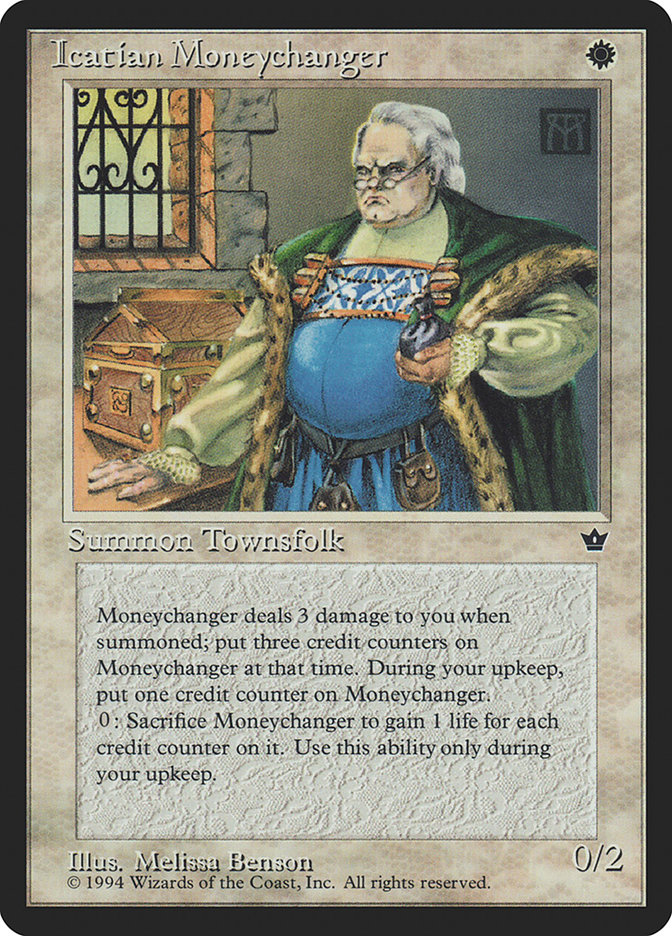
Part Three: Pride Points and You
Magic players, as a whole, are degenerates. We love to bet on things; who pays for dinner, sports games, random acts of randomness, and of course, ourselves against our friends in a simple game of Magic. The team draft has existed for almost as long as I’ve been playing Magic, and will continued to be a time-honored part of this great game. Six friends with at least five dollars each to spare, some draft sets or a Cube, and we’re off to the races.
I don’t think I will ever play enough Cube to avoid having anything but the 3v3 draft be the most-Cubed format in my lifetime. As such, I like to make it interesting when I have other willing participants. To the dismay of the small minority of non-gambling MtGers and half of all judges (the other half are degenerate gamblers too, but you didn’t hear it from me) I like to Cube for money when I can.
I see it like this: I spend a lot of time thinking about Cube and talking about Cube, and am clearly very interested in the subject, and I draft it more than anything else. I can only assume 99% of people aren’t as interested in Cubing as I am, and thus need some motivation to bring their level of care up. When some coin is on the line, just about everyone will take things more seriously and step up their games, which makes the draft and the matches all that more interesting. I also enjoy taking money from my friends, and you probably will too once you try it.
Now, not every situation should call for a money draft. I would avoid bringing it in these situations:
- Cubing with people that may not have the money “on them” (this is code for “I plan to win this draft, since I don’t actually have any money right now”)
- Directly in front of a judge at an event
- When you already owe someone in the draft money (double or nothing?)
- When someone on your team can’t finish the draft (someone on the other team is perfectly fine)
Other than these, I see no reason not to Cube for money every other time. In fact, I won’t even do a rotisserie draft without having something on the line, just do to the massive time commitment involved. And if you didn’t catch it in the header, “pride points” are tournament code for dollars. It works every time!
…of course, I would be remiss if I didn’t cover the negatives of cubing for money as well. Anthony Avitollo and I have had numerous discussions over the implications of having something on the line during a Cube draft, and we stand on opposite sides of the fence. The main issue with drafting for money is that it will rarely, if ever, encourage people to draft outside of their comfort zones as they don’t want to try anything new in fear of failure when they can just draft what they know. I don’t think this is as much the case with more experienced drafters, but people that have not drafted Cubes for years do have a tendency to draft what they feel comfortable with regardless of its viability.
Another issue is removal of fun for some people. When drafting for money, you better be damn sure everyone is okay with it, as it can be a major turn off to a new member of a group if they don’t feel comfortable with their skills, or worse, other drafters at the table. As much as I hate to say it, any time money is on the line for a draft, the chance that someone will un-level the playing field with shady actions increases. This is why everyone should trust everyone else, or at least have someone the Cube owner trusts vouch for someone you may not personally know. Nothing will turn someone against the format quicker than feeling like you got cheated, whether it actually happened or not.
The last strike against a money draft is the heightened level of competition that some of us enjoy. At the end of the day, Cube drafting is a casual format, even if it tends to attract the more competitive players. Every time other factors are introduced the casual level goes down. This can make it difficult to attract new player to the group if it’s being portrayed as a group that plays for money a lot. This is a problem we as a community definitely want to avoid, as we should want as many people as possible interesting in the Cube format.
There is a fine line between competitive and casual that Cube drafting walks, and finding it in regards to drafting for cash will make the experience better for all involved.
Part Four: Cube Terminology
Now for the fun part! A little while ago I started recording definitions I’ve previously used in this column. Most of them were inferred from actual words, but I gave no formal definition. No longer! Below is a collection of terms I’ve used related to cubing, and even a few I haven’t used yet!
|
TERM |
DEFINITION |
|
Cube – noun |
A collection of Magic: the Gathering cards specifically selected to be play in a limited format. Commonly the selected cards are among the |
|
Cuber – noun |
One who participates in Cube drafting. |
|
cubist – noun |
One who enjoys Cube drafting as well as Cube discussion and theory-crafting. |
|
cubable – adj |
A card that is viable of inclusion in most Cubes it is allowed in. |
|
cubing – verb |
The act of participating in a Cube draft. |
|
Cubeness -adj, verb, noun |
Serious Cube drafting action, usually referred to after a 24-hour withdrawal from Cube drafting or a similar absurdly lengthy lay-off. |
|
Cubemunity – noun |
The community of Cubers and cubists. |
|
cubical proportions – noun |
A very epic Cube related story. |
|
Cubetent -noun |
Cube related content or media. |
|
cubability -adj |
A questionable card for Cubes that usually garners discussion on whether or not it’s good enough. |
|
cubaholic – adj |
A person with an addiction to Cube drafting. The only cure is more Cube drafting, which only spirals the user deeper into Cube-related |
|
cuba – noun |
A Cube-induced coma, commonly obtained from playing in many subsequent Magic: the Gathering Online Cube drafts. Not to be confused with |
|
Cube Power – noun |
In reference to the Power 9 (Black Lotus, Mox Pearl, Mox Sapphire, Mox Jet, Mox Ruby, Mox Emerald, Ancestral Recall, Time Walk, and |
|
Cubermetrics – adj |
Analytics regarding cubing numbers and percentages (article in the works!) |
|
cuban missile crisis – noun |
a Cube with that sports tons of cards that have gigantic sweeping effects and high mana costs, also known as a dragon Cube (attributed to Jason Waddell) |
Let me know if there are any that I missed!
Thanks everyone for joining me for this all-over-the-place entry of Cubers Anonymous. I hope I hit some fun discussion points for everyone, let me know in the comments if there was a section you would have like longer!
As always, my Sweet Cube Deck of the Week.
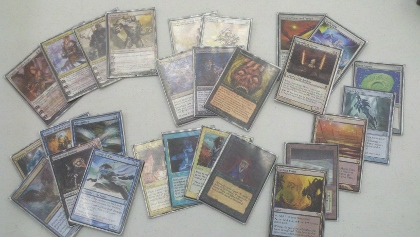
You can now draft my cube at CubeTutor.com! This is a fantastic new website for cubers everywhere to store info and draft your cube! Give mine a draft and then poke around the site to check out all the cool features!
@JParnell1 on Twitter
Official Facebook Cube Drafting Page
New Cube Webite and Forum! RiptideLab.com
